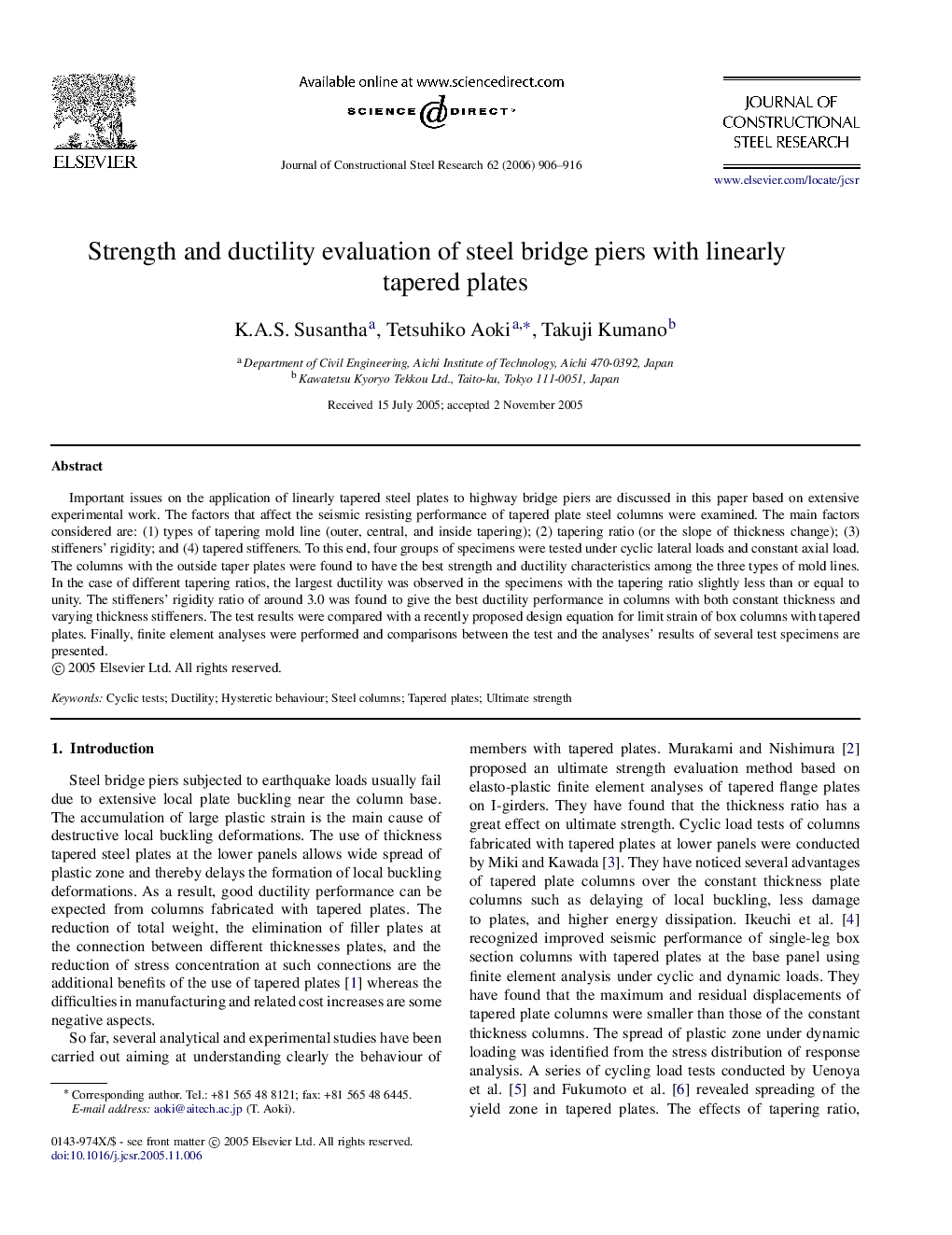| Article ID | Journal | Published Year | Pages | File Type |
|---|---|---|---|---|
| 286312 | Journal of Constructional Steel Research | 2006 | 11 Pages |
Important issues on the application of linearly tapered steel plates to highway bridge piers are discussed in this paper based on extensive experimental work. The factors that affect the seismic resisting performance of tapered plate steel columns were examined. The main factors considered are: (1) types of tapering mold line (outer, central, and inside tapering); (2) tapering ratio (or the slope of thickness change); (3) stiffeners’ rigidity; and (4) tapered stiffeners. To this end, four groups of specimens were tested under cyclic lateral loads and constant axial load. The columns with the outside taper plates were found to have the best strength and ductility characteristics among the three types of mold lines. In the case of different tapering ratios, the largest ductility was observed in the specimens with the tapering ratio slightly less than or equal to unity. The stiffeners’ rigidity ratio of around 3.0 was found to give the best ductility performance in columns with both constant thickness and varying thickness stiffeners. The test results were compared with a recently proposed design equation for limit strain of box columns with tapered plates. Finally, finite element analyses were performed and comparisons between the test and the analyses’ results of several test specimens are presented.
